Se qui sei nuovo ISCRIVITI alle News RSS feed. Thanks for visiting!
Eric è stato il fondatore capo della sezione Architettura del Design Museum di San Francisco ed è uno dei fondatori di ecoTECTURE: il web magazine sul design ecologico. Oltre alla sua colonna mensile su Greenerbuildings.com Eric Corey è associato ad oltre 12 pubblicazioni. Conferenziere per per più di 40 occasioni l’anno attraverso tutti gli Stati Uniti, il suo lavoro è stato pubblicato da Dwell Metropolis, Town and Country, Natural Home e Newsweek. Quando Eric aveva appena 25 anni, il noto architetto e critico Philip Johnson lo ha descritto come “uno dei veri cervelli della sua generazione”. Eric è l’autore di “Green Building & Remodeling for Dummies” (John Wiliey & Sons), un best seller con 50,000 copie stampate. organicARCHITECT è stato considerato uno dei leader nel settore: nominato dalla rivista San Francisco, “Migliore architetto verde” nel 2005 e “Migliore visionario” nel 2007; e “Visionario verde” dalla rivista 7×7 nel 2008.
Eric Corey Freed is principal of organicARCHITECT, an architecture and consulting firm in San Francisco, with over 15 years of experience in green building. Eric teaches the Sustainable Design program he developed at the Academy of Art University and University of California Berkeley. He is on the boards of Architects, Designers & Planners for Social Responsibility (ADPSR), Green Home Guide and West Coast Green, as well as the advisory boards of nearly a dozen other organizations.
He was the founding Chair of Architecture for The San Francisco Design Museum and one of the founders of ecoTECTURE: The Online Journal of Ecological Design. His monthly column at GreenerBuildings.com is syndicated to over a dozen other publications. Eric lectures around the country at 40+ conferences a year, and his work has been featured in Dwell, Metropolis, Town & Country, Natural Home and Newsweek. When Eric was just 25 years old, noted architect and critic Philip Johnson described him as “one of the real brains of his generation”. Eric is the author of “Green Building & Remodeling for Dummies” (John Wiley & Sons), a best seller with 50,000 copies in print. organicARCHITECT is considered leaders in the field; named by San Francisco Magazine “Best Green Architect” in 2005 and “Best Visionary” in 2007; and “Green Visionary” by 7×7 Magazine in 2008.
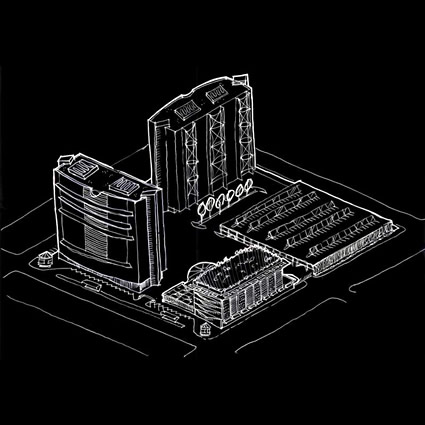
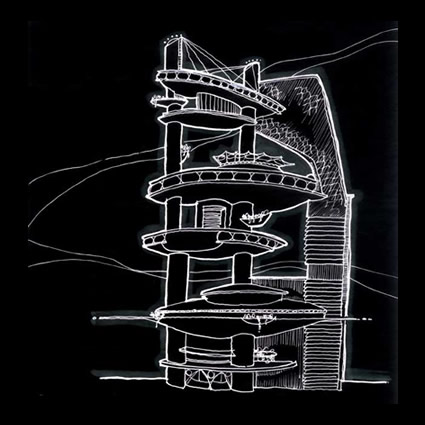
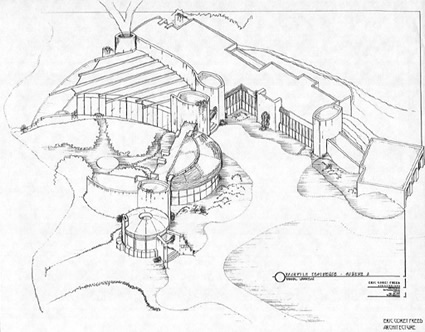
- Daniel Casarin: Perché orgaicARCHITECT? Quale risposta intendete dare con il vostro lavoro e progettazione? E quali sono le vostre fonti d’ispirazione?
- Daniel Casarin: Why organic architecture? What kind of response do you intend to give with your work and design process?
Eric Corey Freed: Quando avevo appena 10 anni, ho visto il primo palazzo di Frank Lloyd Wright e mi ha aperto la mente alle possibilità della architettura. La maggior parte dei palazzi sono noiosi, banali pure prevedibili. Si, abbiamo appena toccato la superficie di quello che si potrebbe fare con i nostri edifici. Possiamo complementare la natura. Invece di vedere i palazzi come distruzione, i nostri edifici potrebbero crescere dal loro sito organicamente e continuamente informare e intensificare le nostre esperienze quotidiane. E’ il nostro dovere come architetti quello di dare impulso alla creatività e all’innovazione nell’architettura portandola avanti.
Eric Corey Freed: When I was just ten years old, I saw my first building by Frank Lloyd Wright and it opened my mind to the possibilities of architecture. Most buildings are boring, banal, even predictable. Yes we have only scratched the surface of what can be done with our buildings. We can coSmplement nature. Instead of seeing buildings as destruction, buildings could grow from their site organically and continually inform and enhance our daily experience. It is our duty as architects to push the creativity and innovation of Architecture forward.
- Daniel Casarin: Quali possibilità e opportunità può dare secondo voi il web per una realtà come la vostra ma soprattutto per chi si affaccia ora nel mondo della progettazione ?
- Daniel Casarin: What do you think are the opportunities the web is able to provide to realities like yours and others who are entering the world of design and architecture?
Eric Corey Freed: Le opportunità che le tecnologie web 2.0 offrono sono quelle principalmente di creare nuovi modi di collaborazione ed ispirazione creative. All’improvviso una singola persona con un’idea radicale è in grado di convocare il potere di cento o migliaia di persone a lavorare insieme per realizzarla. Guarda i meravigliosi sforzi di Architecture for Humanity e il loro Open Architecture Network.
Eric Corey Freed: The opportunities of Web 2.0 technologies has called attention to new forms of collaboration and creative inspiration. Suddenly a single person with a far fetched idea can summon the power of hundreds or thousands of people to come together and work to making it a reality. Look at the wonderful efforts of Architecture for Humanity and their Open Architecture Network.
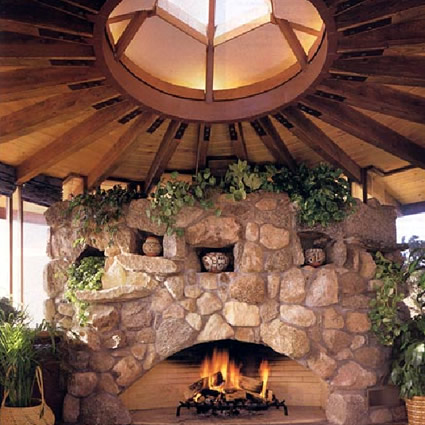
- Daniel Casarin: La vostra realtà progettuale è molto diversa dalla nostra Italiana ed europea ma i tratti che distinguono una progettazione sostenibile e consapevole sono gli stessi, cosa consigliereste ai giovani progettisti che si apprestano ora nel loro lavoro?
- Daniel Casarin: Circumstances that influence your design process given your geographical location are very different from ours (in Italy and Europe) but the traits that characterize sustainable and conscious architecture and design are the same, what would be your advice to young designers and architects that are preparing themselves for the workplace?
Eric Corey Freed: Io ho l’opportunità ogni anno di conoscere centinaia di giovani ed entusiasti studenti che cercano risposte. Vogliono lavorare con me per imparare quello che loro credono siano i segreti della progettazione organica e verde. Ma il mio consiglio a loro è soltanto di cominciare. Comincia oggi verso la tua meta. Comincia adesso a cambiare lo studio dove lavori in uno studio “sostenibile”. Comincia adesso ad incorporare idee sostenibili a tutti i tuoi progetti. Comincia adesso a trasformare il mondo in un mondo migliore visto che si trova in uno stato pietoso, abbiamo bisogno della vostra passione e del vostro entusiasmo per cambiare le cose.
Eric Corey Freed: I get to meet hundreds of young and eager students each year looking for answers. They want to work with me so they can learn what they think are the secrets of organic and green design. But my advice to them is to just begin. Start now towards your goal. Start now to make your existing firm a green firm. Start now to incorporate sustainable ideas into all of your projects. Start now to make the world a better place. The world is in terrible shape, and we need your passion and enthusiasm to change things.
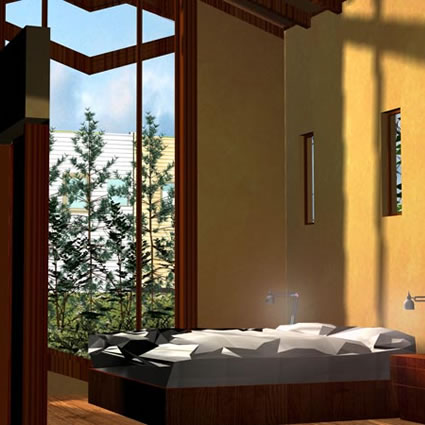
- Daniel Casarin: Quali sono i passi e le esperienze che considerate necessarie come formazione per un progettista sostenibile?
- Daniel Casarin: What do you retain are the steps and experiences necessary for the education of a ‘sustainable’ architect?
Eric Corey Freed: Prima devi capire la meccanica di base dell’architettura sostenibile: massa termica, isolamento, raffreddamento passivo, e progettazione del solare passivo. Puoi imparare questo in un singolo semestre di uno dei miei corsi o da un libro nella biblioteca QUELLA è l’educazione vitale per qualsiasi architetto. Una volta che ti senti a tuo agio con queste idee devi trovare nuovi e creativi modi di risolvere problemi di natura architettonica. Non c’è nessun segreto oltre quello di semplicemente fornire alle idee di sostenibilità una priorità nel tuo progetto.
Eric Corey Freed: First you need to understand the basic mechanics of sustainable building: thermal mass, insulation, passive cooling, and passive solar design.You can learn this in a single semester of my course or from a book from the library. It is vital to education of any architect. Once you are comfortable with those ideas, you must find new and creative ways to solve the architectural problems. There is no secret beyond simply making the ideas of sustainability a priority in your design.
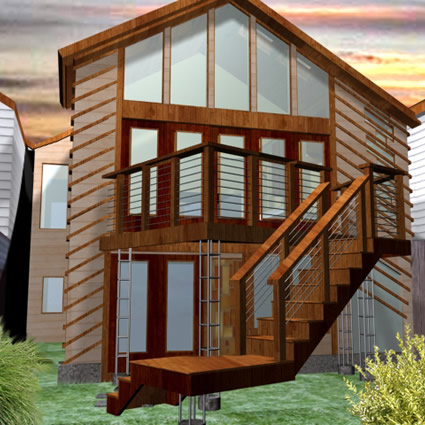
- Araceli de la Parra: Che cosa condividi delle visioni e approcci di Eugene Tsui e l’approccio di ‘Cradle to cradle”? Quali sono le differenze secondo te?
- Araceli de la Parra: What do you share with the visions and approaches of Eugene Tsui and the cradle to cradle approach? What do you see are the differences?
Eric Corey Freed: Tsui è un vero visionario. Lui e io facciamo parte della scuola organica di progettazione, guidati dal lavoro di Frank Lloyd Wright e Bruce Goff (con cui Tsui ha lavorato). Il suo lavoro è talmente avanti rispetto a qualsiasi altra cosa che si stia facendo, che a mio parere, ancora fra 100 anni saremo sicuramente qui a cercare di capirlo. Lui sta creando delle architetture che sono veramente biomimesi. La filosofia di Cradle to Cradle (McDonough e Braungart) offre ai designer l’opportunità di ri-progettare il mondo intero. Invece di riciclare oggetti che non sono stati progettati per essere riciclabili dovremmo ri-pensare i nostri prodotti per essere sostenibili, come se fosse stata la Natura stessa a progettarli.
Sia Tsui, sia il concetto di Cradle to Cradle si stanno muovendo verso la stessa meta: ma in modi molto differenti. Nel mio lavoro sto cercando infatti d’incorporare le brillanti idee di entrambe per creare architetture veramente funzionali ed esteticamente piacevoli. Credo che il mio dono particolare sia l’abilita di spiegare e filtrare queste idee complesse ai nostri clienti.
Eric Corey Freed: Tsui is a true visionary. He and I are both part of the organic school of design, led by the work of Frank Lloyd Wright and Bruce Goff (for whom Tsui worked). His work is so far ahead of anything else being done that we will still be trying to understand it in a hundred years. He is creating true biomimetic buildings. The philosophy of Cradle to Cradle (by McDonough and Braungart) offers designers the chance to re-design the entire world. Instead of recycling things not designed to be recycled, we need to redesign our products to be considered sustainable, as if designed by Nature herself.
Both Tsui and the concept of Cradle to Cradle are moving us towards the same end goal: but in very different ways. In my own work I am striving to incorporate the brilliant ideas of both to create real, deployable and beautiful buildings. I think my special gift is the ability to explain and filter these complex ideas to our clients.
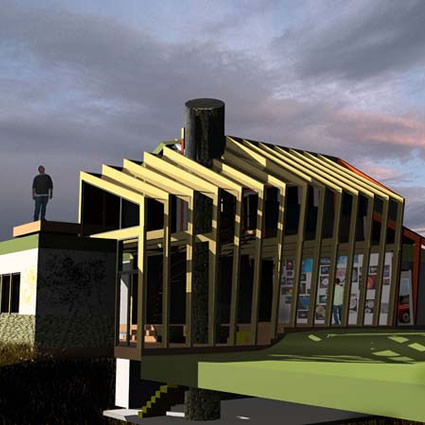
- Daniel Casarin: Voi lavorate nei seguenti campi: architettura, consulenza, educazione, comunità, eventi, pubblicazioni e ricerca, su quale di questi settori vi state concentrando di più? Qualche progetto interessante sul quale vuoi parlarci?
- Daniel Casarin: You do work in the following fields: architecture, consulting, education, community, events, publishing and research, which of these areas are you concentrating the most on? Any particular project that you are working on that could be interesting to expand on?
Eric Corey Freed: Tutti I settori sono collegati, tutti sono mezzi per raggiungere lo stesso obiettivo. Una volta pensavo che l’architettura fosse un obbiettivo a sé stante ma mi sono trovato ad insegnare, scrivere e parlare, tutte attività che non erano architettura. Ho realizzato infine dopo questa esperienza che l’architettura era un mezzo per raggiungere un obbiettivo e quell’obiettivo è di rendere il mondo un luogo migliore. Come potevo essere un architetto senza voler trasmettere queste idee agli studenti? Come potevo essere un architetto senza voler condividere le mie idee con il pubblico del paese? Come potevo essere un architetto senza voler dare qualcosa indietro alla mia comunità? Ho realizzato che il mio obiettivo doveva essere quello di far sì che ogni edificio fosse un’architettura sostenibile, non solo gli edifici che io progettavo ma tutte le costruzioni. Questo lo faccio insegnando, parlando, scrivendo, organizzando eventi in poche parole diffondendo cultura. E’ tutto collegato a ciò che considero come mia responsabilità.
Eric Corey Freed: They are all connected and are all means to an end. I used to think of Architecture as the “end unto itself.” But I found myself teaching, writing, lecturing and doing all of these other activities that were not Architecture. I realized that Architecture was a “means to an end” and that end is to make the world a better place. How could I be an architect without wanting to teach these ideas to students? How could I be an architect without wanting to share my ideas with audiences around the country? How could I be an architect without wanting to give something back to my community? I realized that my goal had to be to make every building a green building. Not just the buildings I design, but every building. To do this, I had to start educating people about the importance of sustainable design. I do that by teaching, speaking, writing, and producing events. It is all connected to how I view my own responsibility.
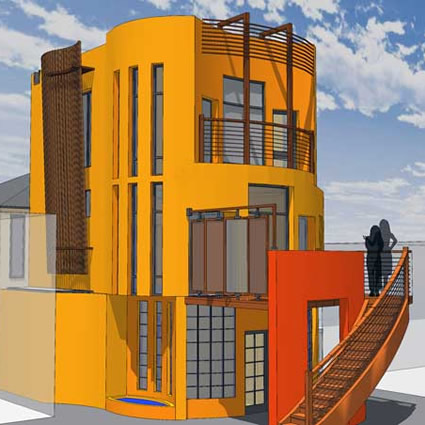
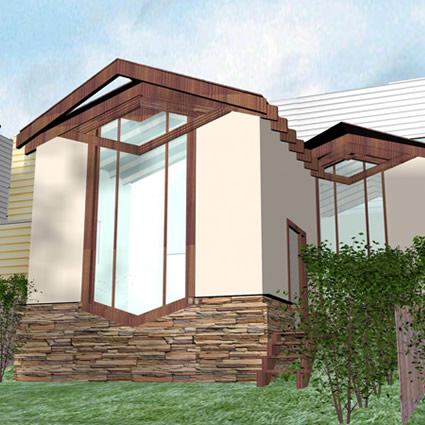
- Daniel Casarin: Qual è il futuro di organicARCHITECT a corto e a lungo termine? Quali obiettivi vi siete posti?
- Daniel Casarin: What is the future of organic architect? short term to long term goals and objectives?
Eric Corey Freed: Vorrei espandere i programmi di comunità che abbiamo qui in California e diffonderli in altre regioni del paese e del mondo. Mentre lavoriamo su progetti più ampi e pubblici, sono entusiasta e ansioso di vedere come le nostre idee sulla comunità e sostenibilità evolvono, si trasformano e si diffondono. Il futuro è brillante come le enormi possibilità che esistono.
Eric Corey Freed: I want to expand on the community programs we perform here in California and bring them to other regions around the country and the world. As we work on larger and more public projects, I am eager to see how our ideas on community and sustainability scale and evolve. The future is bright, as the possibilities are endless.
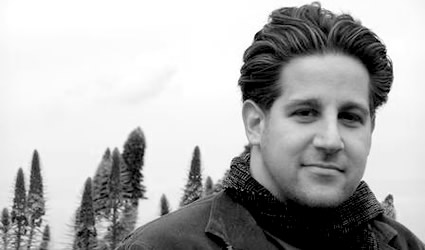
[ Links utili e approfondimenti ]





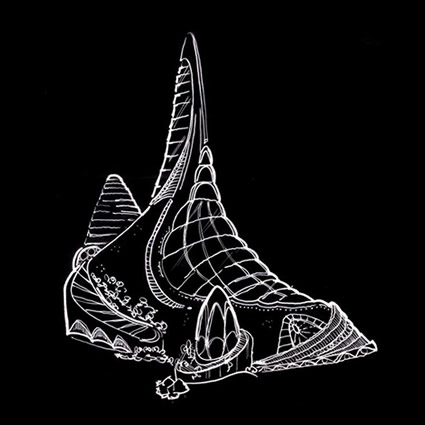





















25 maggio 2009 alle 11:47
I can learn this in a single semester of my course or from a book from the library. It is vital to education of any architect. Once you are comfortable with those ideas, you must find new and creative ways to solve the architectural problems.